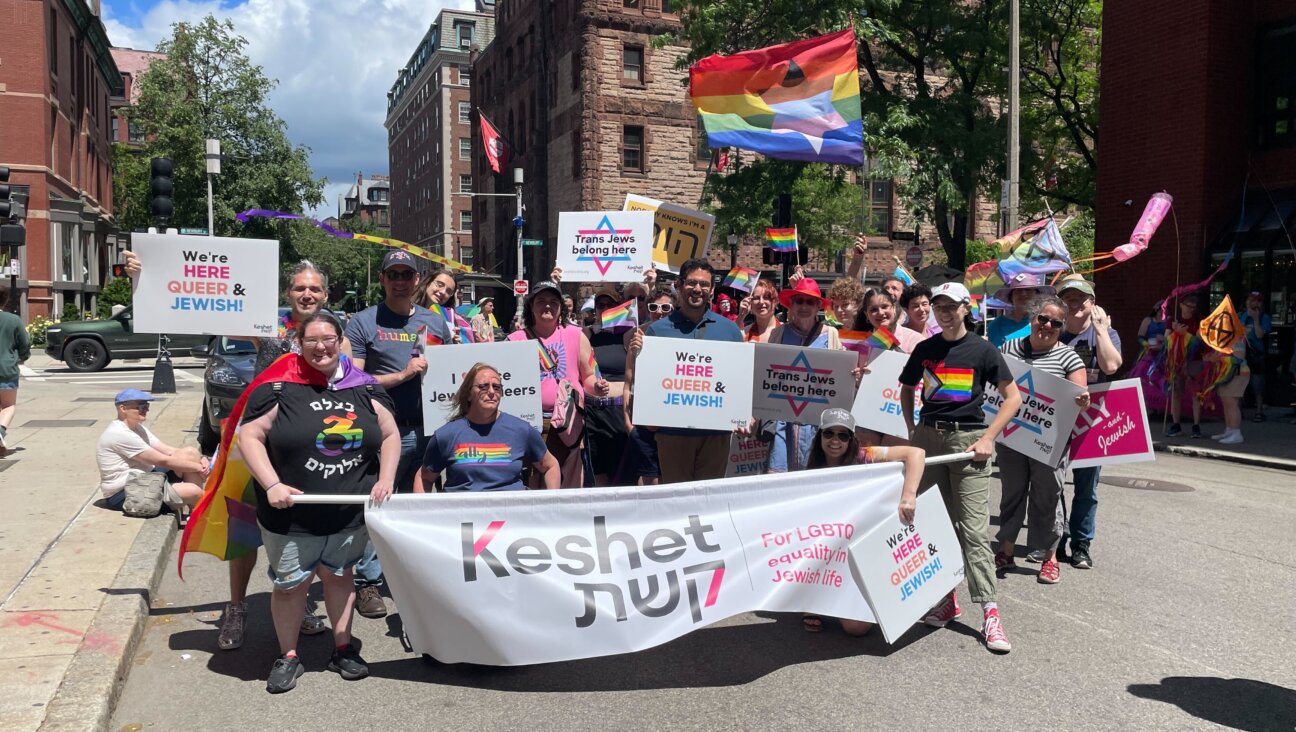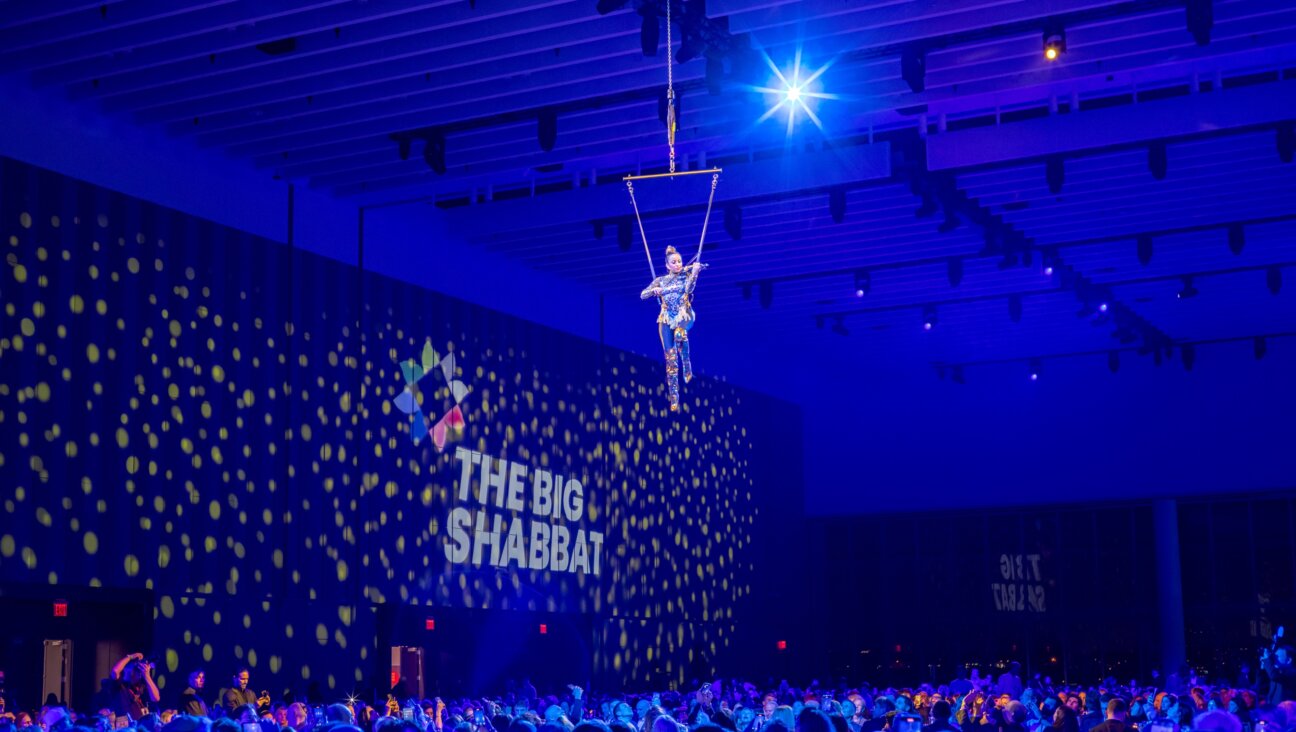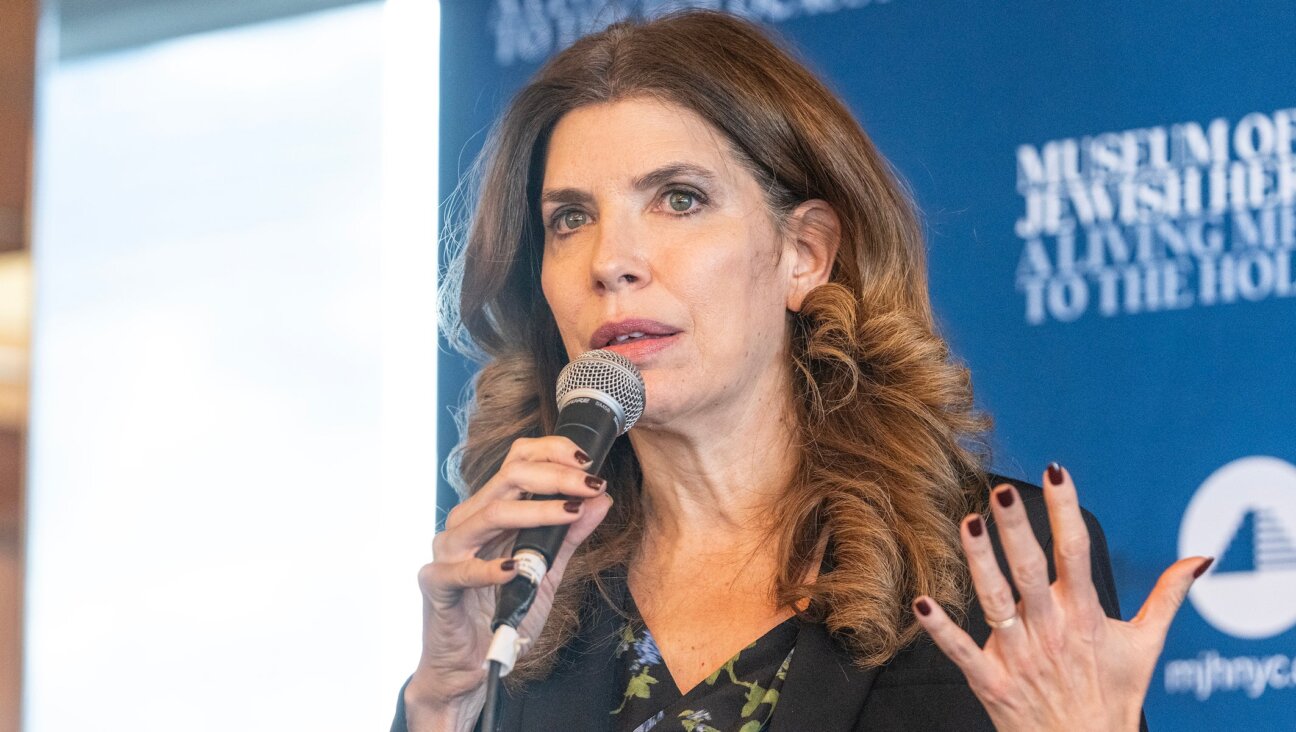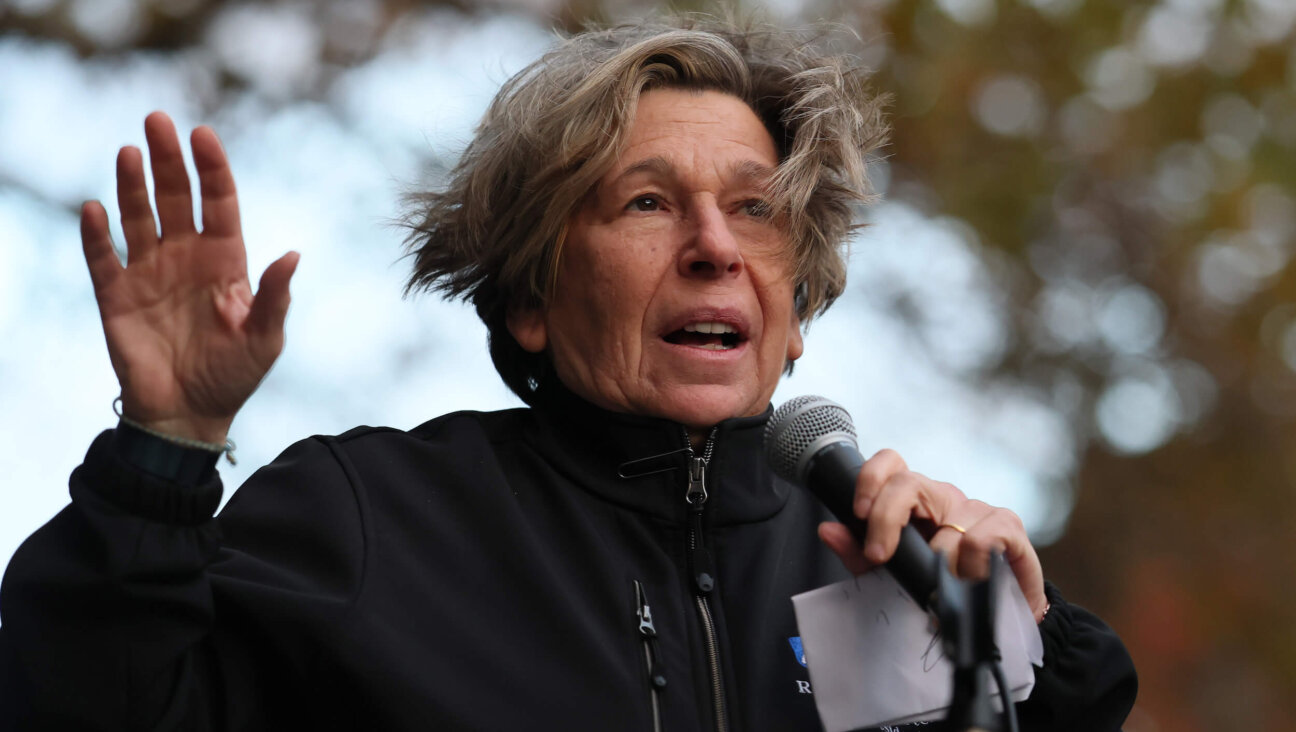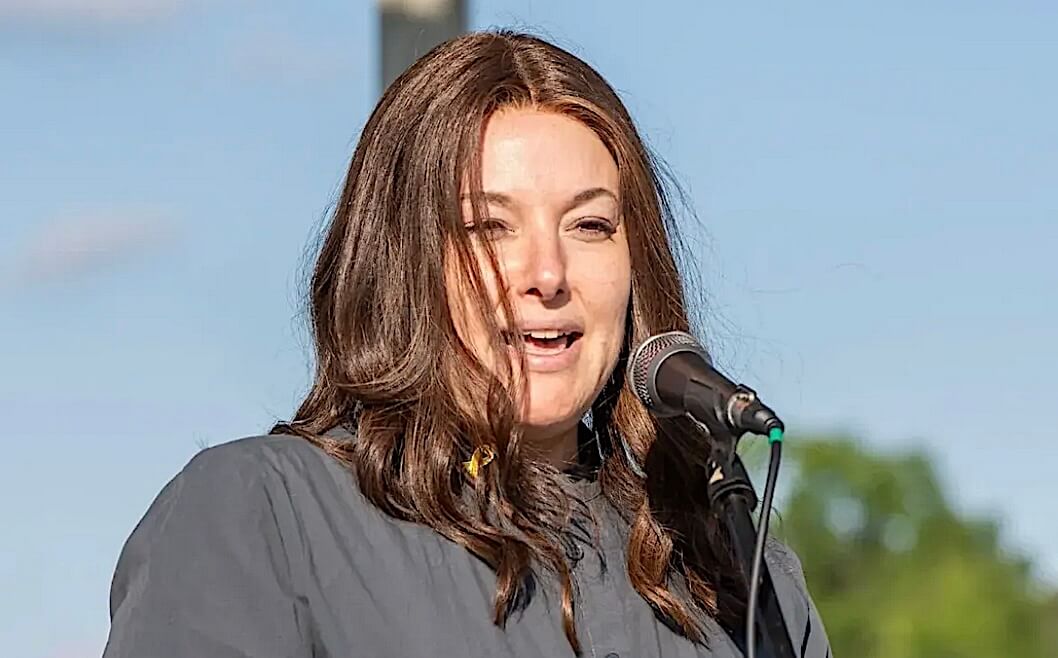Meet the Women Changing the Face of Orthodox Journalism

Image by Anya Ulinich
Responding to the suggestion that some feminists might endorse Ami’s policy of not publishing photographs of women, editor Rechy Frankfurter says she doesn’t need to gussy up her Hasidic beliefs with politically correct rhetoric.
“We are who we are and we’re not apologetic,” Frankfurter said in the magazine’s bustling offices, located in Brooklyn’s Boro Park. “I am neither a feminist nor a trailblazer, and I have no desire to change my community. For me everything is viewed and experienced through the prism of religion. Torah is my guide, my essence.”
The same is true for Ami (Hebrew for “our people”), the hugely successful Haredi weekly magazine she co-founded with her husband, Rabbi Yitzchak Frankfurter, in 2010. Every story must reflect — and certainly not violate — Jewish law. “Our mission is to be an alternative to secular papers and bring to our public news and ideas of interest that’s informative and entertaining — all through the prism of Torah,” she told me. “We have a mashgiach [a supervisor] who reads every single line, and he’ll highlight what’s wrong. Not only am I comfortable with that, I embrace it.”
The publication’s coverage is in fact wide-ranging,: national politics (with correspondents following caucuses and primaries); lifestyle issues (single parenthood, divorce, disability); profiles — in fact, cover stories — on such diverse figured as Charles Hynes, Ben Carson and Jerry Nadler. These figures, who are not necessarily Jews themselves, represent views that are of interest to the Jewish community.
On the flip side, celebrity gossip and scandal have no place. Nor do discussions of LGBT life or same-sex marriage. Secular theater and film are not covered — they’re not part of Haredi life — and while the ideas in a “kosher” approved book or production or art show may be discussed, nothing is reviewed. It’s potentially hurtful.
“[That sort of reviewing] can violate Halacha of lashon hara [slanderous talk],” Frankfurter said.
Exposés are out, too, unless there is a meaningful reason to do them and they are prepared under the guidelines of Halacha as well. “Revenge is a sin,” said Frankfurter. “With every story we publish or think about publishing, we ask ourselves, ‘What is the purpose?’”
One of Ami’s central missions is to present the ultra-Orthodox Jewish community in a positive light and to showcase their compassion for others and the programs they’ve forged through the decades, offering communal assistance for the sick, dying, disabled, bereaved, or hungry, among other special need populations.
On the emotionally charged topic of a criminal, a rabbi sexually molesting a child, for example, Frankfurter acknowledged that it’s tragic and must be dealt with but without suggesting the Yeshiva community is worse than any other. “Also, what people don’t understand is that our community would address the problem with or without the press talking about it,” she said. “If you look at our history you will see that as a community, we have dealt with many issues that needed addressing.”
•
Given the paper’s views, a woman at the editorial helm might seem unexpected, if not downright contradictory. But curiously enough, Frankfurter is not out there by herself. Hamodia and Mishpacha in addition to Ami) are edited by women. Hamodia (Hebrew for “provider of information”) is published by Ruth Lichtenstein. Smaller but significant Haredi news outlets also employ distaff editors at the top rungs along with many women contributors.
Women in the corner office (metaphorically, if not literally) is only part of the paradox. The papers’ collective visions — and there is strong overlap among them — might seem like a throwback, yet they’re all written in English (that’s relatively new) and boast beautiful production values that are upscale and modern featuring state-of-the art photography and graphics.
Hamodia, a daily, offers the most comprehensive news coverage, while Mishpacha (meaning “family”,) with offices in Brooklyn and Israel, is a weekly and arguably the most broad-based in its outreach. Like Ami, the other two publications all cover trends, newsworthy personalities and lifestyle features. Family, young adult and children’s supplements are also part of the mix, along with essays and editorials — some political, others motivational. In their supplements, Mishpacha and Hamodia publish short stories and serialized novels that teach life lessons.
“They all cover Israeli news and support Israel, without taking a pro-Zionist position,” said Ari Goldman, professor at the Columbia University Graduate School of Journalism and director of the school’s Scripps Howard School in Religion, Journalism and the Spiritual Life. “They do not want to alienate those Haredi readers who are not pro-Zionists.”
Whatever the publications are doing, they seem to be succeeding. Though the editors were not forthcoming with precise numbers regarding circulation, Goldman estimated that 100,000 copies per week were either purchased through subscriptions or, more usually, bought at specialty outlets —for example, a Jewish book store like the Midwood-based Eichler’s, or the community’s posh kosher megastore, Pomegranate’s — and that for each publication bought, four more people read it, especially during the Sabbath, when electronic devices cannot be turned on.
All the publications have a digital and social media presence, though these are primitive by contemporary standards. Nonetheless, this is a curiosity, since many Haredim view the technology with suspicion, and employ “kosher filters” to block out potentially offensive materials in their daily lives.
These publications are also awash in advertisements that seek out well-heeled ultra-Orthodox readers in the market for wigs, modest but tasteful clothes, kosher foods and time-shares in Israel, not to mention various charities and fundraising efforts.
Still, the questions remain, what role have women played in forging the stunning success of these publications and, perhaps even more relevant, how have women even assumed these non-traditional roles even as some maintain that the roles are not untraditional at all)?
•
Most acknowledge a trickle-down theory. Cultural shifts occurring in the secular world — and even among Modern Orthodox — have had an impact, however small, on the Haredi universe. The growing presence of the BTs (baalei teshuva) in the community, many of whom were educated in secular schools, has played a role too. They come on board with English writing skills.
But then, so, too, do yeshiva girls who, born into the Haredi world, generally receive more secular education than the boys. The latter are busy studying Talmud and Torah in Yiddish and Hebrew. Some girls may even attend college, while their husbands are training to be rabbis. Yeshiva girls may also be more encouraged to express themselves “artistically,” at least early on. And, later in life, writing continues to be an acceptable form of self-expression (within parameters) for women.
Goldman suggested that while men have headed Haredi publications for decades — think Der Yid, Der Blatt — most do not have the skills or training to edit English-speaking publications — and may not be in tune with the kinds of stories that boost readership and attract the desired purchasing female demographic.
Still, not everyone is convinced that women necessarily bring special skills or new sensibilities to the editorial table. Frankfurter was dismissive of the whole notion, adding that there is nothing new about women bosses in various economic, social and cultural enterprises.
In fact, female editors have it far easier in comparison with their foremothers who may have been entrepreneurs and managers but worked arduously — with or without husbands — simply to survive, especially in a pogrom-afflicted Eastern Europe throughout the ages and in a post-Holocaust world. “They were the women of strength,” Frankfurter said. “They’re the heroes.”
Rabbi Avi Shafran, a spokesman for Agudath Israel of America, an ultra-Orthodox organization, said that the roles women play as editors are an extension of traditional roles. “Haredi women have long, if not always, been involved in mercantile and intellectual projects and efforts, and have always been major forces in forging the attitudes of their families. I see the women involved in Haredi journalism doing much the same for a larger ‘family.’ And, contrary to what some imagine, Haredi women are deeply respected by Haredi men,” he said.
“I don’t see any evidence for the proposition that women involved in these publications make any difference because of their gender,” Shafran continued. “They are all professionals and do good jobs. Journalism, even in the Haredi world, is, at least for the most part, a gender-neutral profession. Mrs. Lichtenstein and Mrs. Frankfurter have been editors of their respective periodicals since their inception, so one can’t compare any ‘before‘ or ‘after’ in those cases.”
The relationship involving an editor’s gender, her overriding religious beliefs, the demographics of her readers and the stories she assigns and to whom is complex. Among the editors interviewed, a woman reporter was as likely as a man to be assigned — or not — to cover a global hot spot.
“I wouldn’t send anyone to a dangerous place,” Frankfurter said. “I’m no more likely to send a male reporter than a female reporter. Their gender has nothing to do with it. However, if I wanted to profile a particular [Haredi] rabbi, I wouldn’t send a woman reporter to interview him, even if she had the philosophical background. The rabbi would simply be uncomfortable. I would only send a male reporter.”

Libi Astaire Image by Barry Kaplan
Viewing gender differences from another angle, Libi Astaire, who has written serialized novels and nonfiction articles (mostly on art and history) for several of these publications, suggested that perhaps women at the editorial helm might add an extra dose of imagination, empathy and intuition. She recalled how Mishpacha’s managing editor, Shoshana Friedman (based in Jerusalem), wanted to cover the 2010 Joseph Papp Public Theater production of “The Merchant of Venice,” starring Al Pacino.
But like the other Haredi publications, Mishpacha doesn’t cover theater or, by implication, advocate attendance at secular cultural events. Still, she felt it was an important topic, and she used the Central Park production as a news peg and vehicle to write a piece that explored how Shylock was played through the ages and how his onstage depiction contributed to anti-Semitism.
It was a dream assignment and totally unexpected, recalled Astaire, who took the assignment one step further, exploiting the presence of the magazine’s reviewing rabbinical board to look into how a Jewish court of law would view the infamous “pound of flesh” agreement between Shylock and Antonio.
“I’d been interested for a long time on whether that contract was kosher under Jewish law,” Astaire said, adding that the whole project resonated on more than one level. The secular press has a dismissive attitude toward Haredi publications, thanks in part to the presence of editorializing rabbis, she added. But in this instance they became a great resource for an original story that in all likelihood would not have been found in a secular magazine.
“Constraints inspire creativity,” said Los Angeles based Rebecca Klempner, novelist, essayist and short story writer, who has contributed many pieces to Haredi publications, often to their young adult supplements. “It is true that in these stories, you can’t have boys and girls being friends unless they’re related, or husbands and wives hugging or voicing endearments. But that forces you to write better, because you can’t rely on descriptions of superficial behavior.”

Rebecca Klempner Image by Courtesy of Rebecca Klempner
•
Baila Olidort, editor of Lubavitch International, said being a religious Jew is intrinsic to who she is, but when she’s at work, “editor” is her defining role.
Still, she couldn’t deny that the paper’s direction (since its birth in 1989) has evolved the way it has because, as a woman, she’s committed to including women’s voices in its pages.
“The fact is, Chabad women take dynamic leadership roles in building and sustaining Jewish communities around the world and I think that warrants a closer look,” she said. “So in our news and feature stories, we’ll interview women as well as men, and when we report on Chabad’s activities anywhere in the world, we’ll look at how women lead and effect change. Our thought pieces also reflect women’s perspectives as well as men’s.”

Baila Olidort Image by Courtesy of Baila Olidort
Under Olidort’s leadership and without advertising revenue — the paper is funded by Chabad Lubavitch Headquarters — Lubavitch International has grown to 40 pages from eight, and is published five to six times a year, reaching about 150,000 readers, she said.
Olidort conducts editorial meetings out of an office at Lubavitch headquarters on Eastern Parkway — the paper employs about 10 writers — but she does most of her writing and editing in her well-appointed home in Brooklyn’s Crown Heights, where I met with her.
Lubavitch International is different from the other Haredi publications, not least in its inclusion of photographs of women. “I see the newspaper as a bridge to Jews wherever they may be,” Olidort said. “A central mission, inspired by the rebbe, is to ensure that Jews have access to community, Jewish education and opportunities to practice Judaism, including those who may know nothing about Jewish religion, history or tradition.”
When Olidort edits stories, she’s mindful of that fact and especially concerned with tone, style and language, making sure a story feels contemporary.
Olidort is well-read. At the time of our interview she was reading Cokie Roberts’s “Capital Dames.” Her living room was filled with books, including works by Joseph Heller, Rebecca West and Aldous Huxley, along with various Jewish histories and religious texts. She listens to NPR and reads The New Republic.
“I love seeing how magazines and newspapers are pulled together,” she said. “I enjoy reading essays where the writer communicates a difficult topic and finds an eloquent way to do it. That’s inspiring. Also, I like to know what’s happening beyond my own community.”
Still, politics are not covered in Lubavitch International, so as to avoid alienating potential readers who may not share a writer’s viewpoint. Special interest nonfiction works are reviewed, theater and films are not, though Olidort grappled with covering the 2012 movie “Fill The Void,” an Israeli film directed by Rama Burshtein, a Hasidic woman. She ultimately decided not to do it.
“It played to unfair stereotypes about the community,” she said. “The idea that it would be okay to pressure someone into a marriage, as depicted in the film, is not representative of Chabad.”
Still, in the future, she might consider covering a film about her community, especially if it’s a misrepresentation. After all, debunking myths could serve a purpose.
She’s also looking forward to a greater presence on the web. Right now, most of her publication’s stories appear on Lubavitch.com, the headquarters’ website. And the full newspaper, including all back issues in its print format, will soon be available there as well.
“Technology didn’t scare the rebbe,” Olidort said. “He knew it could be used for good or for evil. We hope we’re using it well, to promote good.”
•
The future for these publications remains bright, though change may be on the horizon. Goldman is convinced that the issue of publishing photos of women is on everyone’s radar, and will be even more so if Hillary Clinton becomes the Democratic nominee and then perhaps president. Running caricatures of Clinton or shots of her husband in lieu of her will no longer suffice. “If she becomes the president, how do they handle her lighting the menorah on Hanukkah?” Goldman asked.
Shafran said there is no religious basis for omitting photographs of women. Still, if and when shots of women are incorporated into text, acceptability standards regarding poses and dress still have to be observed.
Others were more ambivalent. Astaire, who uses a photo of herself on her website, admitted she rather liked the no-photo policy in the publications, which protected women from becoming sex objects and distractions from the actual story.
In the end it might boil down to a business decision. There is fear that, if one of these publications features a picture of a President Hillary Rodham Clinton, some right-leaning readers will jump ship. By contrast, others felt that pictures of women would grow the audience and, more strikingly, appeal to current readers, who might not object at all.
Frankfurter puts it this way: “If Hillary becomes president, not publishing women’s photos could become sticky. It’s something we will have to revisit with our editors and rabbis. We put our faith and trust in our rabbis.”
Simi Horwitz received the 2015 New York Press Club award for two Forward pieces on the interplay of gender and ethnicity. She also won a 2015 Simon Rockower Award for a Forward article on environmental art.


